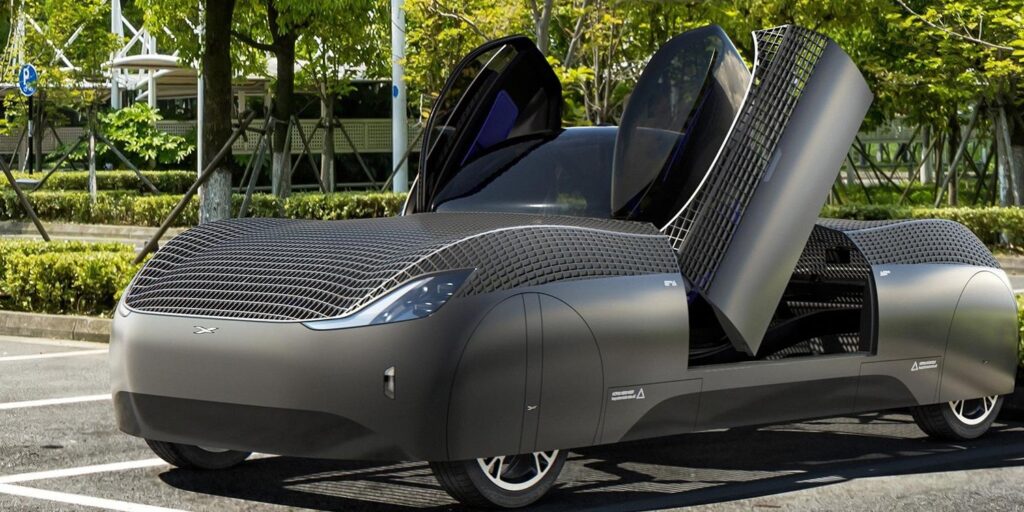The concept of flying cars has long been a staple of science fiction, captivating our imaginations with visions of a future where traffic jams are a thing of the past. But as technology advances at an unprecedented pace, the question arises: are flying cars closer to reality than we think? In this article, we will delve into the latest developments in aerial mobility, exploring innovations in design, engineering, and regulatory frameworks that are paving the way for this groundbreaking mode of transportation.
As we navigate through the intricacies of flying cars, readers will learn about the various prototypes currently in development by leading companies and startups alike. From electric vertical takeoff and landing (eVTOL) vehicles to hybrid models, the landscape of flying cars is rapidly evolving. We will also discuss the challenges that lie ahead, including safety concerns, air traffic management, and the need for robust infrastructure to support this new form of travel.
Moreover, we will highlight the potential benefits of flying cars, such as reduced congestion, lower emissions, and increased accessibility to remote areas. By the end of this article, you will have a comprehensive understanding of the current state of flying cars and the exciting possibilities that await us in the near future. So buckle up and prepare for takeoff as we embark on this thrilling journey into the world of flying cars!
As technology continues to advance at an unprecedented pace, the concept of flying cars has transitioned from science fiction to a potential reality. This article explores various aspects of flying cars, examining their feasibility, technological advancements, regulatory challenges, and societal implications.
The Evolution of Flying Cars
The idea of flying cars has been around for decades, often depicted in movies and literature. However, recent technological advancements have brought us closer to making this dream a reality. Early prototypes, such as the Aerocar developed in the 1940s, laid the groundwork for modern designs. Today, companies like Terrafugia and PAL-V are developing vehicles that can transition between driving and flying modes, showcasing significant progress in this field.
These modern flying cars utilize advanced materials and aerodynamics to enhance performance and safety. Innovations in electric propulsion systems and vertical takeoff and landing (VTOL) technology are also crucial in making flying cars more practical for everyday use. As these technologies continue to evolve, the dream of personal aerial transportation becomes increasingly attainable.
Technological Innovations Driving Flying Cars
Several key technologies are propelling the development of flying cars. Electric propulsion systems are at the forefront, offering a cleaner and more efficient alternative to traditional fuel engines. These systems not only reduce emissions but also lower operational costs, making flying cars more appealing to consumers.
Additionally, advancements in autonomous flight technology are paving the way for safer and more reliable flying cars. With the integration of artificial intelligence and advanced sensors, these vehicles can navigate complex airspaces and avoid obstacles, significantly reducing the risk of accidents. As these technologies mature, the feasibility of flying cars for everyday use becomes more realistic.
Regulatory Challenges and Air Traffic Management
One of the most significant hurdles facing the widespread adoption of flying cars is regulatory challenges. Governments and aviation authorities must establish new regulations to ensure the safety and efficiency of aerial transportation. This includes creating air traffic management systems that can accommodate a new class of vehicles operating in urban environments.
Moreover, the integration of flying cars into existing airspace requires collaboration between various stakeholders, including government agencies, manufacturers, and urban planners. Developing a comprehensive regulatory framework will be essential to address safety concerns and public acceptance of flying cars.
The Environmental Impact of Flying Cars
As the world grapples with climate change, the environmental impact of flying cars is a critical consideration. While electric flying cars promise reduced emissions compared to traditional vehicles, their overall environmental footprint must be assessed. Factors such as battery production, energy sources, and noise pollution will play a significant role in determining their sustainability.
Furthermore, the potential for increased air traffic could lead to congestion and environmental degradation if not managed properly. It is essential for developers and regulators to prioritize eco-friendly practices in the design and operation of flying cars to minimize their impact on the environment.
Public Perception and Acceptance
The success of flying cars will largely depend on public perception and acceptance. While many people are excited about the prospect of personal aerial transportation, concerns about safety, noise, and privacy may hinder widespread adoption. Public education campaigns and demonstrations showcasing the safety and benefits of flying cars will be crucial in addressing these concerns.
Additionally, engaging with communities and stakeholders to gather feedback and address fears will help build trust in this emerging technology. As public perception shifts and acceptance grows, the path toward integrating flying cars into daily life will become clearer.
The Future of Urban Mobility
Flying cars have the potential to revolutionize urban mobility by alleviating traffic congestion and providing faster transportation options. In densely populated cities, traditional roadways often become bottlenecks, leading to increased travel times and frustration. Flying cars could offer a viable solution by utilizing the airspace above, creating a new dimension of transportation.
Moreover, the development of vertiports—designated landing and takeoff areas for flying cars—could facilitate seamless integration into urban infrastructure. As cities adapt to accommodate this new mode of transportation, the future of urban mobility may be transformed, making commuting more efficient and enjoyable.
Economic Implications of Flying Cars
The emergence of flying cars could have significant economic implications, creating new industries and job opportunities. From manufacturing and maintenance to air traffic management and infrastructure development, the flying car industry has the potential to stimulate economic growth. Additionally, the convenience of flying cars may lead to increased productivity as people spend less time commuting.
However, the economic impact will also depend on the affordability and accessibility of flying cars. Ensuring that this technology is available to a broad audience will be essential for maximizing its economic benefits and fostering a sustainable market.
Conclusion: The Road Ahead for Flying Cars
In conclusion, flying cars are closer to reality than we might think, thanks to rapid technological advancements and growing interest from both consumers and investors. However, significant challenges remain, including regulatory hurdles, public acceptance, and environmental concerns. As we move forward, collaboration between stakeholders will be crucial in addressing these challenges and ensuring the successful integration of flying cars into our transportation systems.
The future of flying cars holds immense potential, and with continued innovation and thoughtful planning, we may soon see them become a common sight in our skies.
| Aspect | Description |
|---|---|
| Definition | Flying cars, also known as vertical takeoff and landing (VTOL) vehicles, are designed to operate both on roads and in the air. |
| Current Developments | Several companies are actively developing prototypes, with successful test flights demonstrating the feasibility of flying cars. |
| Technology | Advancements in electric propulsion, battery technology, and autonomous systems are key enablers for flying cars. |
| Regulatory Challenges | Air traffic regulations, safety standards, and urban air mobility frameworks need to be established to integrate flying cars into existing transportation systems. |
| Public Perception | While many are excited about the potential of flying cars, concerns about safety, noise, and air traffic congestion remain prevalent. |
| Future Outlook | Experts believe that flying cars could become a reality within the next decade, with urban air mobility solutions being tested in various cities. |



